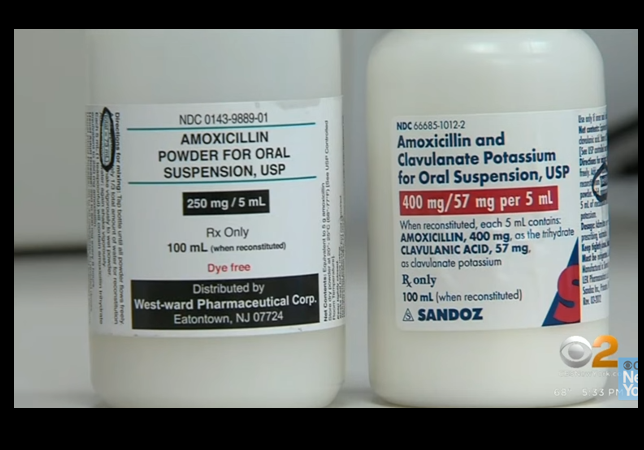U.S. Facing Shortage of Liquid Amoxicillin as RSV Cases Surge

The U.S. Food and Drug Administration reported a nationwide shortage of the oral solution of amoxicillin, an antibiotic widely used for bacterial infections.
Amoxicillin, a popular antibiotic in the United States, has over 15 million prescriptions written each year. It is the first-line therapy treatment for many acute bacterial infections, according to the Centers for Disease Control and Prevention. It is commonly prescribed for children to treat conditions such as ear infections, strep throat, sinus infections, whooping cough, and urinary tract infections.“The FDA is aware of some intermittent supply interruptions of amoxicillin products in the U.S., and is currently working with the approved manufacturers,” the FDA told multiple outlets.
In late summer, I noted a surge in the number of Respiratory syncytial virus (RSV) cases in children. It turns out that the main factor in the shortage is the widespread use of antibiotics to treat these infections.
The drug is used to battle secondary infections associated with RSV.
One issue could be that the pharmacy has the drug in stock, but not in the strength needed for the prescription, so it may require some back and forth between the pharmacy and the prescriber, CNN reported.”I think it’s going to be challenging for doctors and prescribers to give their patients a prescription that they’ll then be able to get filled, because pharmacies are going to have a variety of different strengths in stock, and you hate to have that delay of the back and forth, especially for an antibiotic they usually want to get started pretty quick. So I think it’s going to be a frustrating shortage,” Erin Fox, a senior pharmacy director at University of Utah Health, told CNN.In the meantime, the FDA is working with manufacturers to prevent further shortages or reduce the effects of any delays, CNN reported.
Representatives of one pharmaceutical manufacturer indicate supply chain problems are also an issue.
Another company, Sandoz, told CBS2 they are seeing a significant increase in department resulting in “a supply situation” for some antibiotics, including amoxicillin.”The combination of rapid succession of the pandemic impact and consequent demand swings, manufacturing capacity constraints, scarcity of raw materials, and the current energy crisis means we currently face a uniquely difficult situation. We are working with key stakeholders including governments to find ways to manage this critical situation,” Sandoz said in part.They added, “We remain confident in our ability to supply these critical medicines long term and are on track to strengthen the supply reliability of our antibiotics currently low in stock.”
CLICK HERE FOR FULL VERSION OF THIS STORY